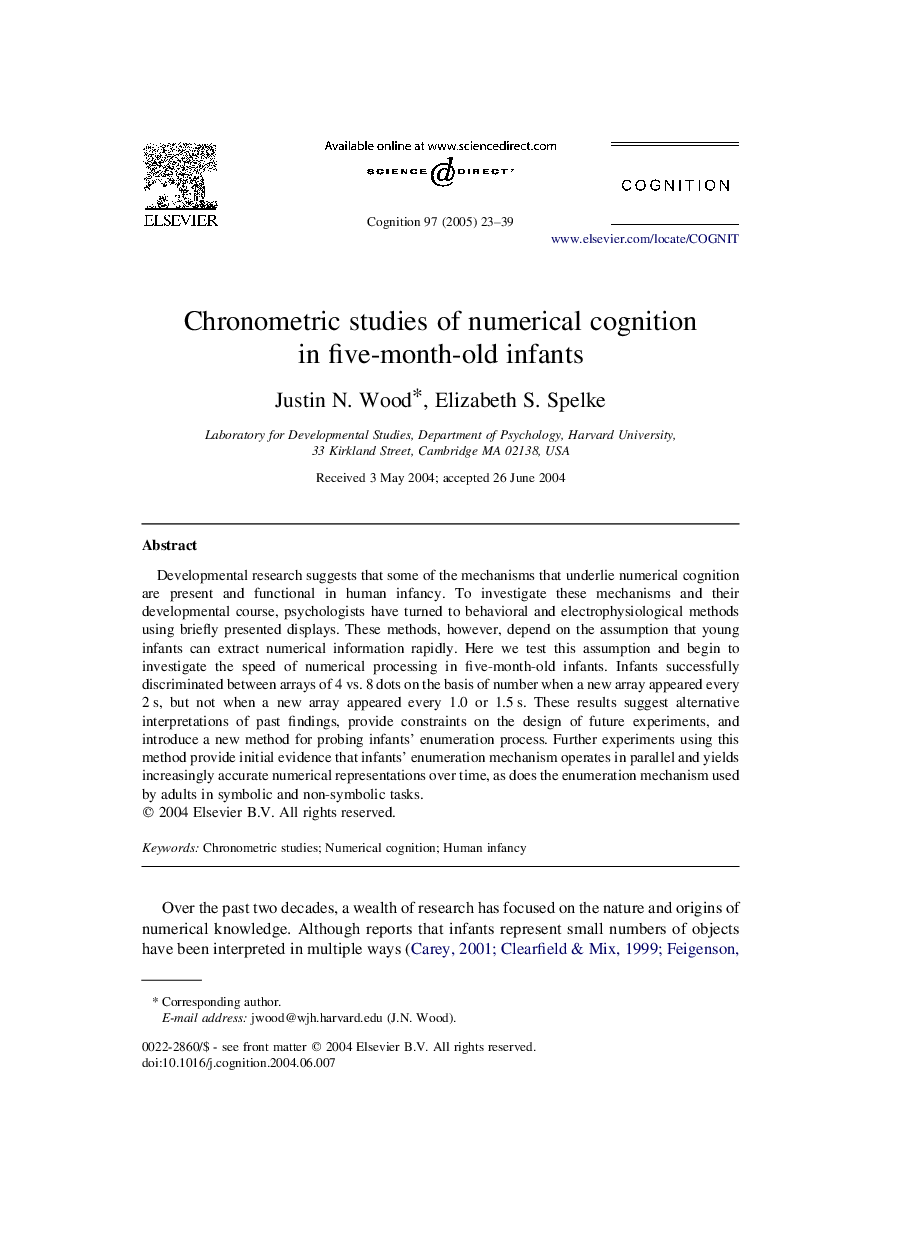| Article ID | Journal | Published Year | Pages | File Type |
|---|---|---|---|---|
| 10458114 | Cognition | 2005 | 17 Pages |
Abstract
Developmental research suggests that some of the mechanisms that underlie numerical cognition are present and functional in human infancy. To investigate these mechanisms and their developmental course, psychologists have turned to behavioral and electrophysiological methods using briefly presented displays. These methods, however, depend on the assumption that young infants can extract numerical information rapidly. Here we test this assumption and begin to investigate the speed of numerical processing in five-month-old infants. Infants successfully discriminated between arrays of 4 vs. 8 dots on the basis of number when a new array appeared every 2Â s, but not when a new array appeared every 1.0 or 1.5Â s. These results suggest alternative interpretations of past findings, provide constraints on the design of future experiments, and introduce a new method for probing infants' enumeration process. Further experiments using this method provide initial evidence that infants' enumeration mechanism operates in parallel and yields increasingly accurate numerical representations over time, as does the enumeration mechanism used by adults in symbolic and non-symbolic tasks.
Keywords
Related Topics
Life Sciences
Neuroscience
Cognitive Neuroscience
Authors
Justin N. Wood, Elizabeth S. Spelke,
